Get the weekly SPARTANAT newsletter.
Your bonus: the free E-Book from SPARTANAT.
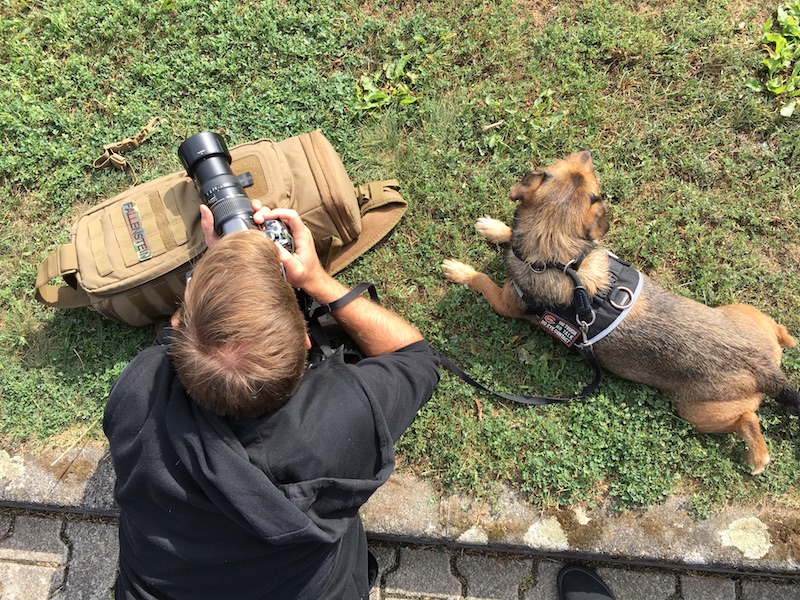
Hazard 4 from California produces a colorful bouquet of tacticool bags, including a camera bag. It goes by the somewhat bulky name " Hazard 4 EVAC Photo Recon Sling Pack". To keep the text from getting twice as long, we'll refer to it as the Sling Pack. Journalist Daniel Fallenstein has been using it for years, here is his review: When I saw this piece, I knew I had to have it and purchased it about two years ago from TACWRK in Berlin.
Since then, I've been using the Sling Pack for photography and filming at events, political demonstrations, and of course, privately. Let's get to the conclusion: It's a great bag for tactical and civilian missions with a medium-sized camera equipment.
Materials and Other Values
Hazard 4 is a high-quality manufacturer and uses Cordura, Velcro, YKK zippers, Paracord zipper pulls, and a logoed lining for the Sling Pack. The piece measures 55cm*20cm*20cm.
This also reflects on the price. The 200€ are a bargain compared to the often several thousand euros worth of gear that this bag protects.
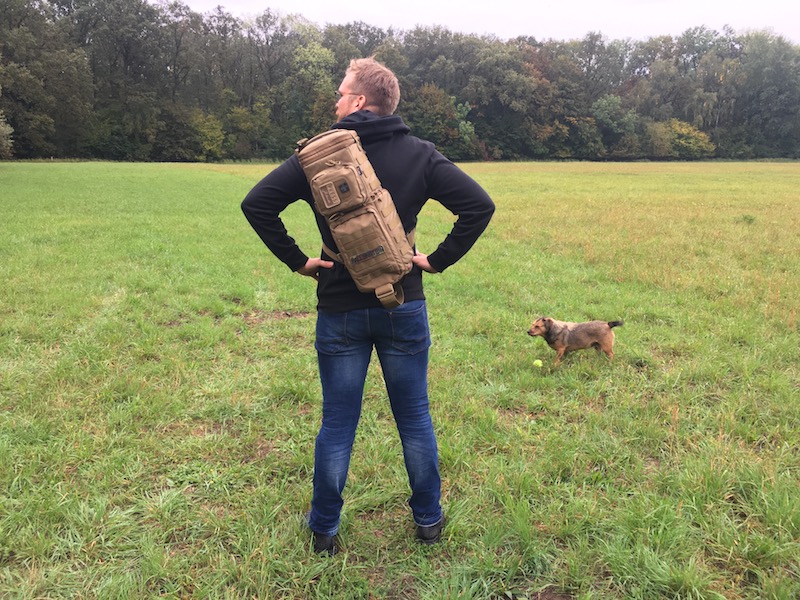 Usage
Usage
The principle of the Sling Pack is simple. You carry it filled with high-quality equipment slung over your shoulder.
 When you need access, pull the bag to the front. The Sling now lies nearly flat like a belly bag, and you can take out the camera, store the flash, change lenses, fish for spare batteries, and much more. After the operation, the bag goes back on the back. This works much better for right-handers due to the arrangement of the zippers and pouches, but the entire carrying system can, in principle, also be used in reverse.
When you need access, pull the bag to the front. The Sling now lies nearly flat like a belly bag, and you can take out the camera, store the flash, change lenses, fish for spare batteries, and much more. After the operation, the bag goes back on the back. This works much better for right-handers due to the arrangement of the zippers and pouches, but the entire carrying system can, in principle, also be used in reverse.
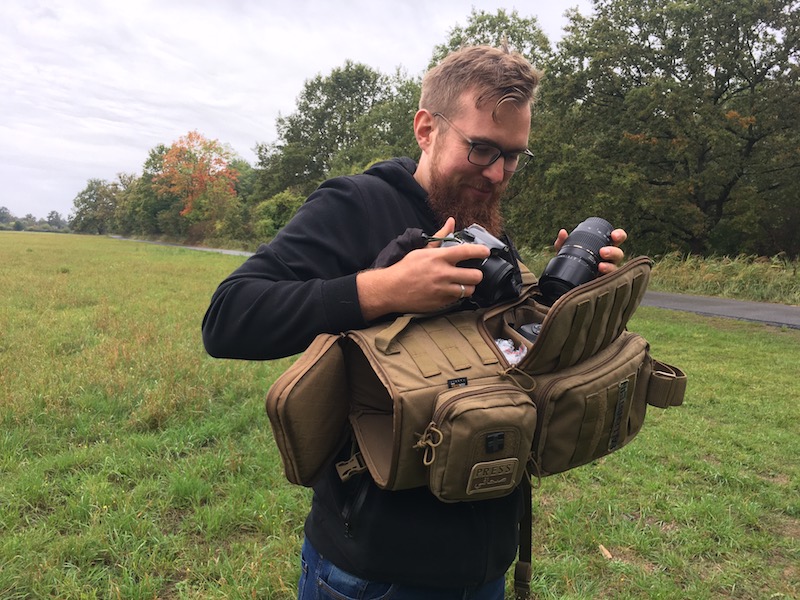 Since I mainly work with a Canon DSLR camera and three interchangeable lenses, I often have the Sling Pack in the belly bag position in front of me. Then I have access to everything. There is a real "workspace" where lens caps, lenses, cameras, and much more can be handled safely.
Since I mainly work with a Canon DSLR camera and three interchangeable lenses, I often have the Sling Pack in the belly bag position in front of me. Then I have access to everything. There is a real "workspace" where lens caps, lenses, cameras, and much more can be handled safely.
The Sling Pack also serves as a support - see main image. When it supports the zoom lens on its camera bag, the photographer saves the tripod. The dimensions and strength of the Sling Pack are ideal for this use in the prone position. But also on walls, car roofs, etc., the Sling Pack support can be used for targeted precision shots.
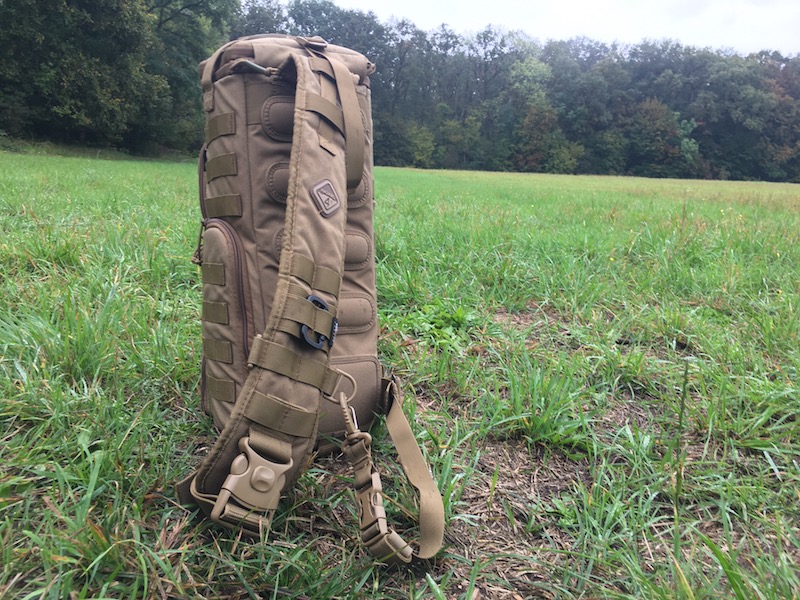 The Thing with the Sling
The Thing with the Sling
The wide (9cm) strap is thickly padded for comfort with 3D mesh, firmly sewn to the top of the bag, and can be fixed at the bottom in several positions.
The inclined tactical photojournalist can attach the lower end of the strap either to the left or right according to preference for ergonomic fit, or in the center - if the overall ensemble should be wearable on both sides.
The strap is equipped with MOLLE strapping, of course, to attach any pouches for quick access. The corresponding containers for snacks, cigarettes, IFAKs, and the like feel at home here.
If needed, the strap can be released using a large buckle. So you can get in a car with the Sling Pack slung over your shoulder and detach without any major gymnastics. To prevent accidental release, secure the buckle with a slider.
A side strap connects to the main strap to prevent the Sling Pack from sliding on the back in the transport position. Conveniently, it can be detached and secured again with a carabiner or buckle. One looks cleaner, the other is faster.
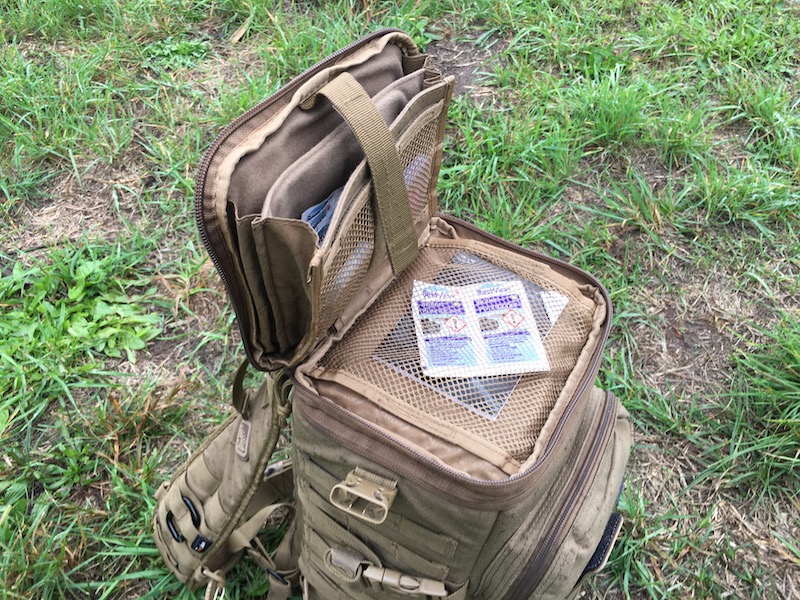 Lid and Top Access
Lid and Top Access
On the top of the lid, there are two double zippers. The first one opens the generously padded compartment for memory cards. More memory cards fit in there than you could possibly use in a lifetime. They are safe from pressure, impact, and moisture.
 The second zipper gives us access to the large main compartment. More on that soon. These zippers (like all others on the Sling Pack) are equipped with Paracord zipper pulls.
The second zipper gives us access to the large main compartment. More on that soon. These zippers (like all others on the Sling Pack) are equipped with Paracord zipper pulls.
The lid is held by a piece of Cordura on the bag. We can store the zipper pulls behind this "hinge," then it's difficult to access the contents. But maybe we want that in the hustle and bustle of the big city.
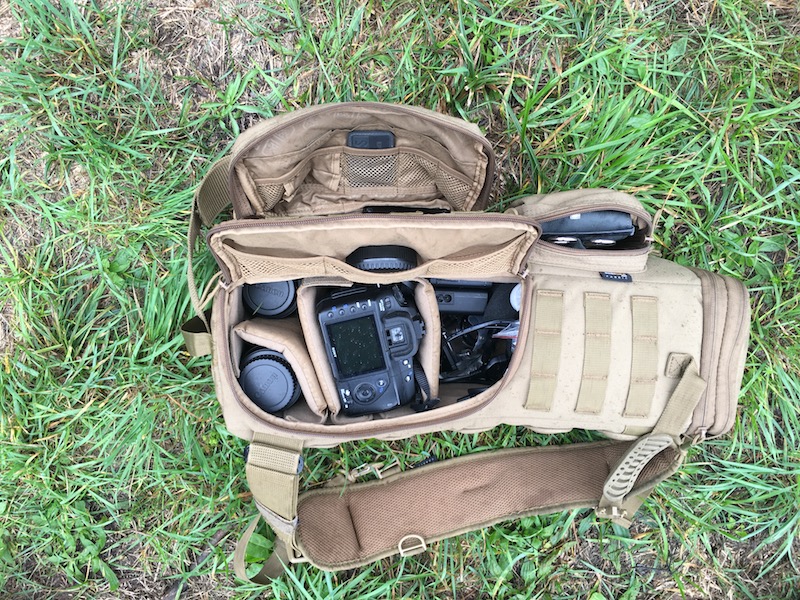 Main Compartment
Main Compartment
The main compartment is huge (50cm*20cm*20cm, approximately 20l), rectangular, thickly padded, and lined with Velcro. In my experience, it easily fits two DSLR cameras, four lenses, chargers, batteries, flashes, and plenty of other accessories.
We divide the main compartment with the provided padded elements that can be velcroed in. How exactly we do this depends on our equipment, mission, and personal preferences.
We have access to the main compartment from two sides. Firstly from the aforementioned lid flap, and secondly through a flap. It goes over half the length of the main compartment and is located at the bottom left side in the "driving direction" when the Sling Pack is on the back. If we have the Sling Pack in the "belly bag" position, this flap is at the top, giving us easy access to about three-quarters of the main compartment and the organizational pockets on the inside of this main flap. We can access the last quarter of the main compartment better through the lid flap. That's why I have separated it with a cushioned partition in my Sling Pack.
In the organizational pockets of the main flap, we keep small items that need to be protected but shouldn't disappear into the depths of the main compartment.
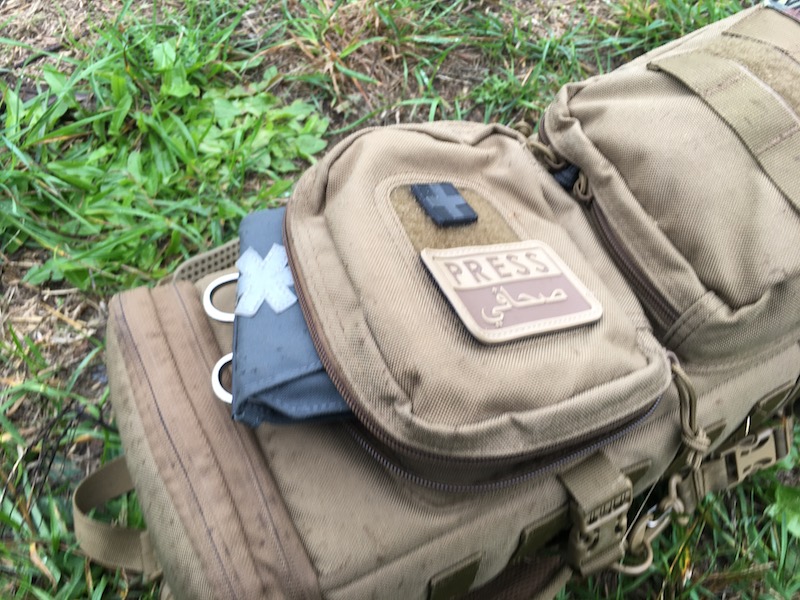 Attached Pockets
Attached Pockets
On the main compartment, facing away from the wearer, two pockets are attached. They are suitable for equipment that needs to be quickly accessible and doesn't require special protection from the outside world.
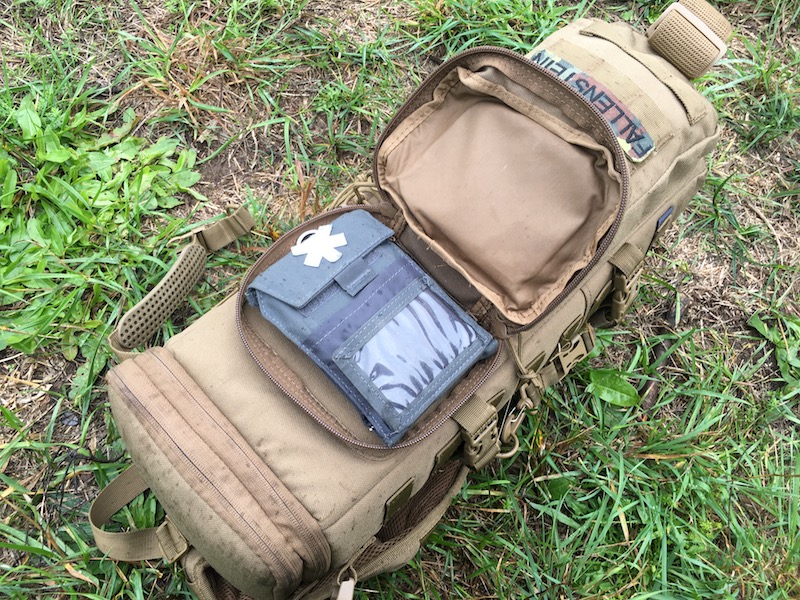 The upper of the two pockets is sparsely equipped. A two-way zipper with zipper pulls opens it on three sides, inside there is ... nothing. No padding, no Velcro, no organizer. When opened, the contents quickly come out. And it's quite small (18cm*16cm*5cm). Expensive and delicate items belong in other pockets. It has a Velcro area where for example the Press Patch, also from Hazard 4, can be displayed. For me, a moderately loaded Helikon-Tex Pocket Med Insert fits perfectly inside.
The upper of the two pockets is sparsely equipped. A two-way zipper with zipper pulls opens it on three sides, inside there is ... nothing. No padding, no Velcro, no organizer. When opened, the contents quickly come out. And it's quite small (18cm*16cm*5cm). Expensive and delicate items belong in other pockets. It has a Velcro area where for example the Press Patch, also from Hazard 4, can be displayed. For me, a moderately loaded Helikon-Tex Pocket Med Insert fits perfectly inside.
SPARTANAT is the online magazine for Military News, Tactical Life, Gear & Reviews. 
Send us your news: [email protected]
Ad
similar
Get the weekly SPARTANAT newsletter.
Your bonus: the free E-Book from SPARTANAT.


